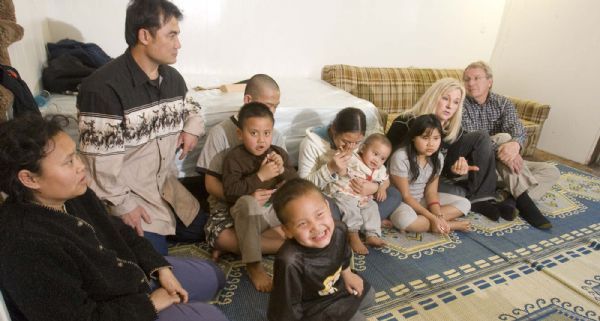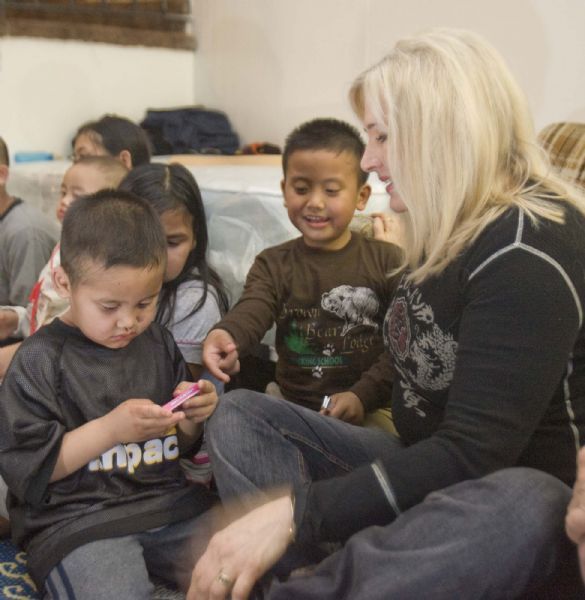This is an archived article that was published on sltrib.com in 2010, and information in the article may be outdated. It is provided only for personal research purposes and may not be reprinted.
They arrived without coats or gloves, stepping off the airplane in only flip-flops as snow tumbled from the Utah sky.
Sar Sein and his wife, Hser Eh Dah, never had seen those white flakes before -- and certainly hadn't prepared for the winter chill that would come with them. The temperatures had been decidedly tropical in the refugee camp along Thailand's border where they had spent almost a decade.
So with only 20 pounds of luggage and five of their now six children in tow, the refugees from Burma arrived in the Salt Lake Valley with next to nothing to keep out the frosty air.
And yet, the family found another refuge in Utah -- this time from within the LDS faith. The church provided food and clothes and helped the family find work in a strange new world that introduced them to electricity, running water and coin-operated washing machines.
They were Christians -- but not Mormons -- who found a place to worship and a congregation of helping hands.
The LDS Church now has become home to so many refugees like the Sein family that it organized its first Karen-speaking branch in Utah last summer. That branch is expected to be fully autonomous from other congregations this month with classes interpreted in Karen, Karenni and Burmese.
Since its first sacrament service in June, the branch has more than doubled its membership. A congregation that began with about 50 members has baptized an additional 52 people, according to branch President Stephen Naylor.
And more conversions could come from the congregation's own pews, where close to half its meeting-goers aren't members (Sar Sein has joined the LDS faith; his wife hasn't). Sunday attendance has climbed as high as 172 people, Naylor said, and 10 people who participated in a recent choir performance weren't Mormons.
But if more baptisms come, church leaders insist that it's not because membership is a requirement for receiving humanitarian aid. It isn't. The church hands out resources with or without LDS baptism to an impoverished refugee population forced to flee its homeland of Burma, now known as Myanmar, to escape a government-backed genocide.
It has enlisted the help of five missionary couples and several volunteers within that Karen-speaking branch alone to ensure those Burmese families don't go hungry, don't lose their homes and don't find themselves without proper clothing when temperatures plunge.
Among those humanitarian workers are Jim and Maryann Webster, who still remember a half-dozen refugee families in native dress stepping into their LDS chapel in downtown Salt Lake City four years ago. The immigrants were Christians looking for a place to worship. But they didn't speak a word of English.
Since then, the number of refugees has swelled.
The U.S. State Department reports that the number of refugees arriving in Utah from Burma has jumped from 17 in 2005 to 365 last year. It's a population that has become more visible since the 2008 abduction and murder of 7-year-old Hser Ner Moo, which captured headlines and horrified a community.
The Websters note their mission isn't to proselytize. Instead, it's to help refugees read their mail so they don't lose their government benefits. It's to help them learn to use food stamps and ensure that their refrigerators don't run empty. And it's to help them find work to keep a roof over their heads and become self-sustaining.
"We are not trying to convert anybody," Maryann Webster said. "We are doing humanitarian service. We are just trying to help these people learn to live in this country."
And so, on a hazy December afternoon in South Salt Lake, that couple arrived at the Sein home with winter coats for sledding and a message that people would be stopping by with Christmas gifts later that week. Among the children greeting them at the door of the family's meager apartment -- where mats were rolled out on the living-room floor for sitting -- was a 17-month-old boy named Jet De Love, whom Maryann nearly delivered a year before.
The LDS Church's humanitarian efforts have raised concerns outside the faith by those who wonder whether refugees -- many of whom adhere to the Baptist faith because of the 18th-century ministry of Adoniram Judson among the Karen people -- are converting to Mormonism because of the assistance.
John Cowan, pastor of the nondenominational Calvary Chapel of Salt Lake City, said some refugees have felt pressured -- sometimes subtly, other times overtly -- to attend LDS services and even join the faith to maintain their employment or keep basic humanitarian aid.
"This," Cowan said, "is a very real issue that we see them wrestling with."
While the LDS Church does give priority to members when handing out work assignments and hours at its humanitarian center, Naylor said, it provides assistance to members and nonmembers alike.
And it's hard work, Naylor acknowledges. The branch president spends more time doing church service than attending to his full-time job as a cabinetmaker.
But it's worth it, he said. Anyone serving that Burmese population "will tell you it has been the hardest thing they have done in their lives, but they don't want it to stop."
He has his own explanation for why his LDS branch has seen its ranks expand so rapidly in the past six months. And it has everything to do with people like the Websters.
The Burmese people "see Christianity in action," he said, "and not just people that profess the word and do other things."
jstettler@sltrib.com" Target="_BLANK">jstettler@sltrib.com
The LDS Church's new Karen-speaking branch meets Sundays at 12:45 p.m. in a chapel at 2280 S. 300 East, South Salt Lake.





